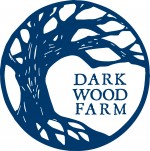Since I moved home to Kentucky and started the farm back in January, we have been experiencing some interesting weather to say the least. Subzero temperatures, abundant snow, pounding rainstorms, late season freezes, and early spring high temperatures have challenged this first-time farmer. Most of my farming experience has been in the Pacific Northwest and California. The climate and severe weather events in those places are much different than what we experience here in the tri-state region. I find myself checking the weather constantly and sorting through the different options in my mind about how to best protect my plants from weather extremes. This week, we’re going to have lows in the 30s and 40s for a few nights, then we’ll be back to highs in the 80s in no time. Some of the plants will love the cold weather (kale, collards, lettuces, and spinach) while others may hate it, or worse be killed by the cold (I’m looking at you, freshly transplanted summer and winter squash), and some will decide they’ve had enough of this crazy weather and go to seed. Like my gal Dolly Parton says, “It’s enough to drive you crazy if you let it.”

Around mid-March, I almost let it make me crazy. I was losing sleep at night wondering if my plants were going to survive in my unheated greenhouse during those weird 16 degree nights. I couldn’t decide if I should buy a heater for the greenhouse, move the plants inside my cramped trailer kitchen, or wait it out and see what would happen. If I lost my plants, I’d have to re-do all my seeding and then fall behind on my planting schedule, and consequently have a big gap in what I could bring to the farmers market in the spring. Indecision was swirling around my brain. I finally realized that I had to let go of all of that worry. Nature is unpredictable and I can’t be in control all the time. Sure, I could run out and buy expensive equipment to heat my greenhouse, or I could buy extra fabric row cover and cover everything in the garden, or I could buy equipment to mist the plants overnight to prevent frost from settling on the leaves. But that’s not what my farm is about. I’m trying to grow things in tune with nature, and nature is variable, sometimes violent, and certainly not sterile, or controlled. The plants have to deal with this variability, and so should I.
One of my farming mentors, Bob Cannard, used to tell me and my fellow student farmers, “50% for humans, 50% for nature.” By this he meant that only half of a farm should produce food for people to eat. The other half should go to all the other consumers in nature – the bugs, the rabbits, the deer, the soil microbes. It’s easy to get greedy and try to grow and sell as much as possible on a farm, especially when you have bills to pay. However, when we sacrifice some crops to all the other eaters in the world, the farm becomes a much more fertile and healthy place in the long run, and we can let go of chasing after the latest gadget or technology that will “save” our crops. As the farmer, I can get caught up worrying about killing frosts, insects eating my crops, or deer destroying my garden, or I can face challenges as they present themselves, and let go of the reins a little and trust that things will work out in the end. So what if the temperature drops low enough to kill my summer squash tonight? I’ll just have to re-plant them or plant something new in that space. In the meantime, my kale might grow more happily, some insect pests might die too, and the newly dead squash vines will compost into the soil to feed the next crops. 50% for humans, 50% for nature helps me to sleep a little better at night, and I’m thankful that Bob taught me that lesson.
